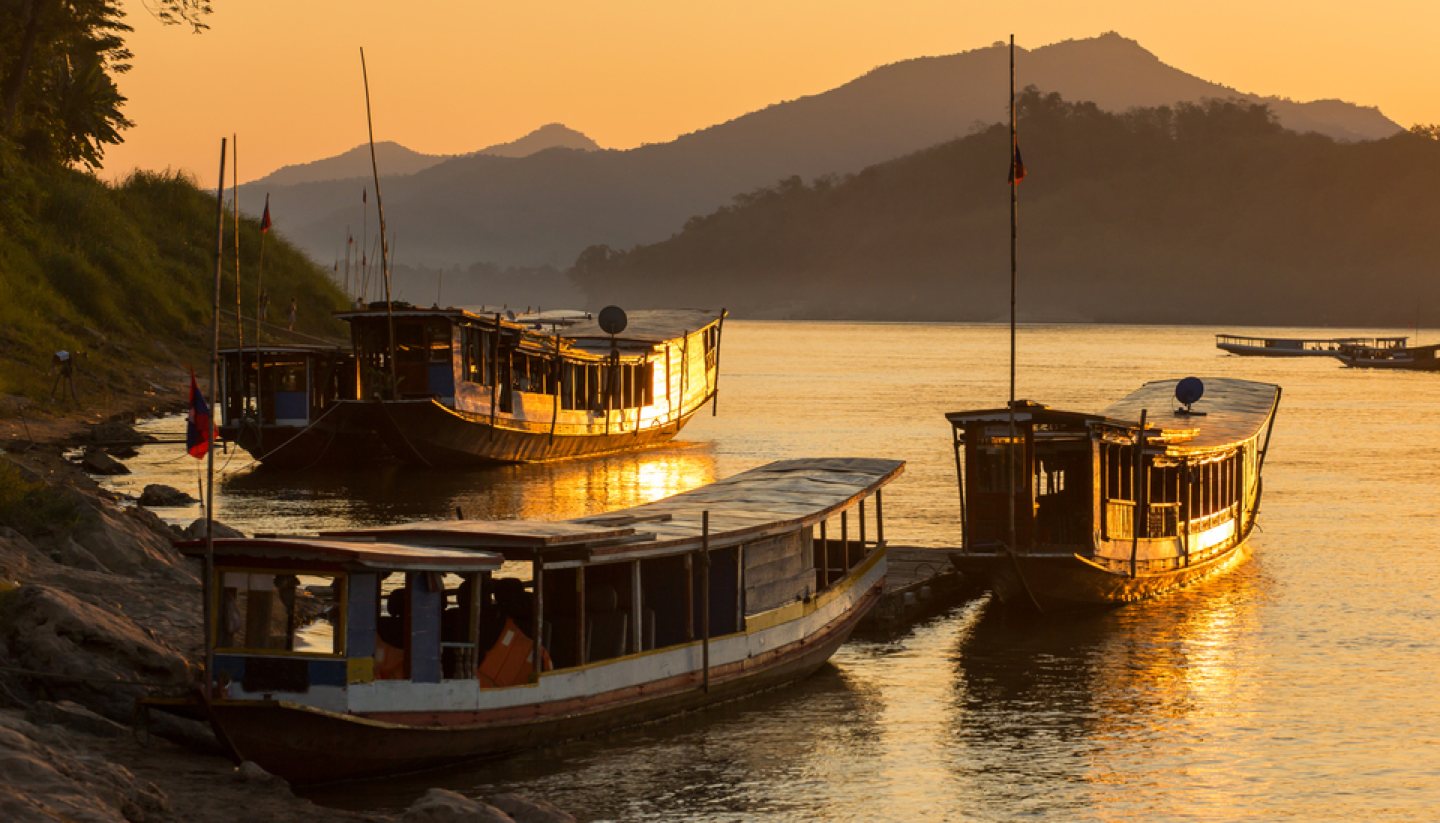Getting Around Laos
Air
Lao Airlines (www.laoairlines.com) runs domestic air services from Vientiane to Xieng Khouang, Luang Prabang, Huay Xai and Oudomxai in the north and Pakse and Savannakhet in the south. The airline is based at Wattay airport. All domestic flight times are around an hour.
Departure tax
Usually included in the ticket price.
Air Note
The domestic terminal is next door to Wattay International Airport.
Road
If you are on a strict timescale, it is advisable to pre-arrange travel outside Vientiane with a tour company to avoid unforeseen delays and costs.
Side of the road
RightRoad Quality
Many of the roads have been paved in recent years, including the main highway from the Thai border at Savannakhet to the Vietnamese border. However, few main roads are suitable for all-weather or night driving.
In the north of the country, there is a road link between Vientiane and Luang Prabang, and from Vientiane to Savannakhet and Pakse in the south.
Road Classification
Roads in Laos have been classified into several categories - national road, provincial road, district road, urban road, rural road and special road.
Car Hire
Unless you are an experienced driver, it’s not recommended to hire cars in Laos as driving standards are not up to international levels and there are few rules. However, if you are capable, it is an excellent way to get off the beaten track and to explore. A safer option is to hire cars with a driver through hotels or tourist agencies.
Taxi
The word ‘tuk-tuk’ is used to describe a large variety of lightweight vehicles, generally with three wheels. While there is a tuk-tuk organization in Vientiane that is supposed to control the prices that tourists pay between destinations, the rates remain negotiable. Decide on the fare before getting in. A songthaew (meaning ‘two rows’ in Thai) is a pick-up truck, with two benches, a roof and open sides; these operate both as local buses and taxis.
Bike
Laos has plenty of quiet roads that lend themselves to cycling. It is a growing industry and there are several local operators offering guided cycling throughout the country. There are good maps available and cycling is one of the best ways to come into contact with local people.
Most motorcycles are either Honda Baja or scooters. Japanese-made bikes will serve you better if you’re going off the beaten track, especially if heading to mountainous areas. Rental shops exist in Vientiane only. Don't leave your passport as a deposit/guarantee. Helmets are mandatory and the local police are keen on checking motorcycle licences, so make sure you have one or be prepared to pay a heavy fine.
Coach
Privately run, air-conditioned VIP coaches make the journey between tourist centres whereas slower, more basic, local buses cover a far wider range of destinations. Note the toilet stops are often far and few between, and breakdowns/tyre changes are the norm rather than an exception.
Regulations
There are very few road regulations in general within Laos.
Breakdown services
Non-existent. It's a case of asking around the village or town to see if there is a mechanic available.
Documentation
International Driving Permit recommended.
Urban travel
All major towns are small and accessible on foot or by bicycle. You can hire motorbikes and bicycles for the day in Vientiane, Luang Prabang and other places frequented by tourists. There is a mixture of old and metered taxis in Vientiane that can usually be located at Wattay Airport, the Friendship Bridge and the Morning market. You can also hire taxis by the day.
Rail
Other than the international train between Thailand and Laos there are no other railway lines in the country.
Water
The Mekong and other rivers are still a vital part of the country's transport system, especially during the monsoon, despite the road system being gradually improved. However, the number of boats available has decreased dramatically. The choice is between irregular (and very basic) slow ferries and exciting but noisy and hazardous speedboats. A service runs from Luang Prabang to Huay Xai, but there is no longer a service between Vientiane and Luang Prabang, except for the rare cargo boat that may take passengers.
The journey upstream from Luang Prabang to Houay Xai takes two days, with an overnight stop in Pakbeng, and downstream it takes one day. There are regular jet-boat trips along the river, run by Lao River Exploration Services (www.jetboat.laopdr.com). Boats can also be hired privately. Many of the remaining services only run in the wet season, when the Mekong floods and becomes more navigable. Huay Xai (the border to Thailand in the northwest) to Luang Prabang and travel south of Pakse are the main routes still in use.
Water note
It’s not advisable to take speedboats - these are poorly maintained, insubstantial crafts, customised canoes at best, that are capable of fast speeds due to their powerful motors. These boats literally skid across the water and if they come into contact with a large wave or debris along the way they are likely to crumble into the water. There are regular accidents and fatalities.


